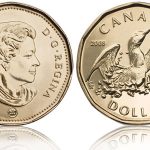Australian dollar managed to recover lost positions versus its US peer during the early phase of Asian trade on Tuesday.
AUD/USD pair fell to session lows at 0.9083 earlier on Tuesday, while at 6:39 GMT it was trading at 0.9149, registering a 0.15% gains for the day. Support was likely to be received at July 3rd low and a three-year low, 0.9038, while resistance was to be encountered at July 5th high, 0.9179.
What caused Aussie to decrease in value earlier was a report by National Bureau of Statistics in China, which said that the countrys consumer price index rose to 2.7% in June on annual basis, extending its increase from 2.1% in May. Preliminary estimates pointed a consumer inflation of 2.5%. Additionally, Chinese producer prices dropped by 2.7% in June, while a month ago the decrease was 2.9%. This data influenced Australian dollar, because China is Australias largest trading partner.
Chinese consumer inflation report was released one day after a report by Australia and New Zealand Banking Group (ANZ) showed that job advertisements in Australia were 1.8% less in June, compared to May, following a bigger decrease in May, compared to April, 2.5%.
Meanwhile, on Tuesday it became clear that National Australia Bank (NAB) business conditions indicator declined to its weakest point in four years in June, neutralizing the shreds of recovery in May and April, as business conditions in the sector of retail trade dropped to its lowest point on record. Australias Index of business conditions in June showed a reading of -8, deteriorating from -4 in May. Values above 0 are a signal that the number of companies with good business results during the month exceeds the number of companies, reporting weak data. National Australia Bank (NAB) business confidence index improved slightly in June, but remained still below the historical average trend value, because of the spreading pessimism, regarding countrys mining sector. Business confidence in Australias manufacturing sector marked a moderate increase, due to national currency devaluation. Prospects in retail and wholesale trade were still dimmed. NAB officials said, that the main reasons behind these not so optimistic results were recent downbeat data, regarding Chinese economy, as well as expectations that US Federal Reserve Bank will begin tapering its monthly asset purchases by this years end.
Aussie was lower against the Japanese yen, with AUD/JPY cross erasing 0.10% to reach 92.15. AUD/NZD pair also recorded a drop, by 0.15% to 1.1690.





